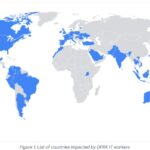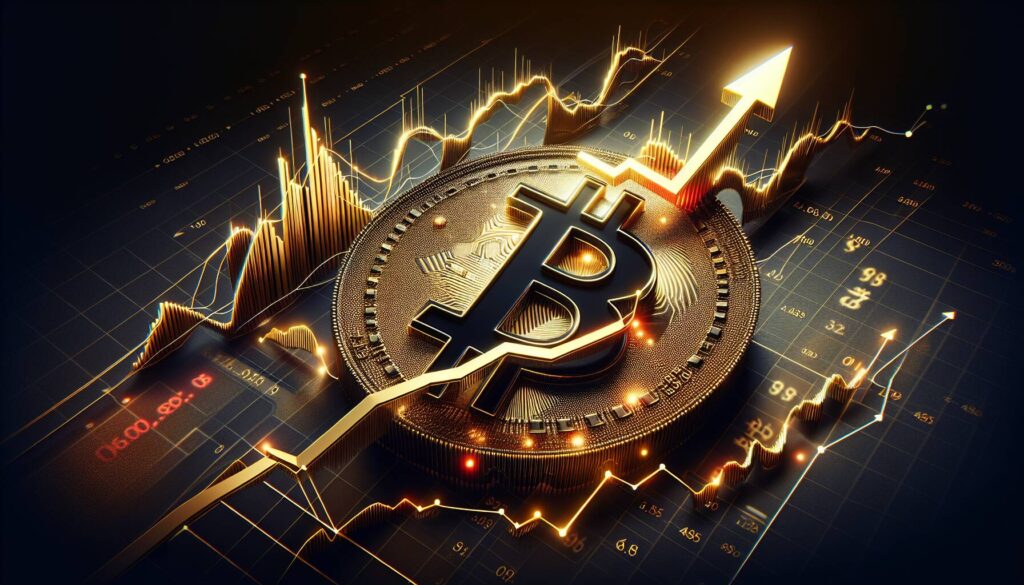The cryptocurrency market has encountered unexpected turbulence under the Trump Administration, disappointing many investors who anticipated a surge in prices driven by regulatory reforms and initiatives like a Bitcoin Strategic Reserve. Instead, Bitcoin’s value has seen a sharp decline from its early-year highs, dipping to the mid-,000 range throughout March. This drop reflects a growing correlation between cryptocurrency and traditional financial assets such as stocks and bonds, both adversely affected by macroeconomic uncertainties.
Investor sentiment remains shaky amid concerns over tariffs—additional charges imposed by the U.S. on imports from various nations—which have fueled worries about a potential global recession. As uncertainty looms, many investors are retreating from cryptocurrencies, perceived as high-risk assets in favor of gold, which has gained 18% year-to-date and is regarded as the current ‘safe haven.’
“This is all about markets’ ‘risk appetite’ which continues to deteriorate,” noted Marc Ostwald, Chief Economist & Global Strategist at ADM Investor Services International. “For the time being, it drives a wedge between crypto assets and gold.”
As the global financial landscape becomes increasingly fragmented, investors are actively seeking alternatives to traditional financial instruments. However, there’s an ongoing debate about the potential future role of Bitcoin. Omid Malekan, an adjunct professor at Columbia Business School, raised the possibility that Bitcoin could emerge as a new form of gold as economic uncertainties push investors to explore its prospects.
Some analysts suggest that the situation may improve, with thoughts that the impact of tariffs could already be reflected in current crypto valuations. Zach Pandl, head of research at Grayscale, highlights that President Trump’s upcoming “Liberation Day” announcement regarding tariffs may ultimately bring relief to the markets. He anticipates that if the tariff announcements are strategically phased, the markets—including cryptocurrencies—might respond positively.
“Potentially once we get through this announcement, crypto markets can focus back on the fundamentals which are very positive,” Pandl stated.
Moreover, Pandl asserts that the ongoing tariff discussions could enhance the appeal for currencies other than the U.S. dollar, setting the stage for Bitcoin’s further integration into the global monetary system. He remains optimistic, suggesting that once the initial shock of the current economic climate dissipates, Bitcoin has the potential to reach new heights by the end of the year, reinforcing his belief in its long-term viability as a digital asset.

Impact of Tariffs and Economic Uncertainty on Cryptocurrency Markets
Understanding the dynamics of the cryptocurrency market under the Trump Administration is crucial for investors. Here are the key points that outline the current landscape and its implications:
- Unexpected Market Behavior:
- Crypto markets have not behaved as anticipated, contrary to investor hopes for price increases driven by regulatory reform.
- Bitcoin prices fell from over 0,000 to the mid-,000s, reflecting a broader downturn.
- Correlation with Traditional Assets:
- Crypto assets are increasingly correlated with traditional stocks and bonds, influenced by macroeconomic uncertainties.
- This interconnection may lead risk-averse investors to avoid cryptocurrencies.
- Impact of Tariffs:
- Imposition of U.S. tariffs has raised concerns about a global recession, affecting investor sentiment.
- Gold has emerged as a preferred “safe haven” over crypto due to the prevailing economic climate.
- Shift Toward Bitcoin:
- Bitcoin is increasingly viewed as “digital gold”, suggesting a potential shift in investor preferences.
- Economic uncertainty may prompt a renewed interest in bitcoin as an alternative asset, similar to gold.
- Potential Tariff Pricing:
- Experts believe the impact of tariffs might already be factored into current crypto prices, indicating that further declines may be limited.
- Positive announcements regarding tariffs could lead to a market rally, allowing crypto to refocus on its fundamentals.
- Long-Term Confidence in Bitcoin:
- Despite short-term price drops, experts maintain confidence that bitcoin will eventually reach new all-time highs.
- Tariffs may weaken the dollar’s dominance, creating space for bitcoin to thrive as a global monetary asset.
“The entire [future] is uncertain and in some ways unknowable… But bitcoin has found footing in some circles as ‘digital gold’.” – Omid Malekan
Crypto Markets Under Trump: Unpacking the Turbulence and Opportunities
The landscape of cryptocurrency has been anything but predictable since the onset of the Trump Administration. Initially, optimism fueled by anticipated reforms—like a Bitcoin Strategic Reserve—promised a bullish trend. Instead, surprise dynamics have sent Bitcoin prices plummeting from impressive peaks above 0,000 to the mid-,000 range.
Investors find themselves caught in a web of heightened correlation between cryptocurrencies and traditional assets, including stocks and bonds. This shift has emerged against a backdrop of macroeconomic uncertainty, where tariffs loom large and Wall Street remains on edge due to fears of a global recession. This climate has significantly dampened investor enthusiasm for digital assets, which are often viewed as high-risk investments. Notably, Marc Ostwald of ADM Investor Services International highlights that the deteriorating ‘risk appetite’ among markets has diverted attention toward gold, the steadfast “safe haven.”
However, despite these troubling trends, certain experts see potential for crypto’s resurgence. Notably, Omid Malekan posits that cryptocurrency may eventually step into gold’s shoes as the preferred hedge. This speculative viewpoint gains traction in the context of economic instability, which tends to prompt investors to seek alternatives to traditional assets—and cryptocurrencies could benefit from this pivot.
Competitive Advantages: Some analysts, like Zach Pandl from Grayscale, argue that the anticipated tariff announcements could actually reset market sentiments. The notion that the worst might be over—provided announcements are measured and phased—suggests a potential turnaround for crypto prices. Furthermore, there’s an argument that tariffs may inadvertently undermine the dominance of the dollar, opening the floodgates for alternatives such as Bitcoin.
Additionally, institutional movements, like the IPO of Circle, signal robust confidence in the crypto sector, suggesting a solid long-term outlook for digital assets despite short-term volatility.
Disadvantages: Conversely, the ongoing political and economic uncertainties pose substantial risks. Current correlations with traditional asset markets indicate that cryptocurrencies are not immune to shifts in investor sentiment, particularly in reaction to macroeconomic pressures like tariffs. If crypto assets are still viewed as overly speculative, this could lead to further sell-offs, complicating recovery efforts. Moreover, potential forthcoming tariffs could translate into new waves of fear among investors and deter future investments into cryptocurrencies.
As the scenario unfolds, investors navigating this tumultuous market landscape are faced with a dual-edged sword. On one hand, those with a high risk tolerance might find opportunity in the predicted rebalance should fundamentals improve. On the other hand, conservative investors might steer clear of crypto entirely, favoring gold as a safer bet. The upcoming “Liberation Day” tariff announcements could either catalyze a recovery or exacerbate uncertainties—making it a crucial juncture for participants in the crypto space.
















